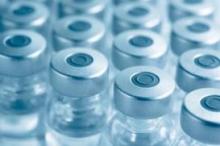In a direct comparison of four different schedules of the 13-valent pneumococcal conjugate vaccine, IgG antibody levels following the final booster dose were comparable for all four schedules, according to a report published online Sept. 3 in JAMA.
In what they described as the first randomized controlled trial assessing the immunogenicity of PCV13 in the four different immunization schedules "currently used in most high-income countries," all children vaccinated in all schedules achieved comparably high IgG seroprotection levels. "Therefore, we do not expect a difference in clinical protection against invasive pneumococcal disease," said Dr. Judith Spijkerman of Wilhelmina Children’s Hospital, Utrecht (the Netherlands) University Medical Centre, and her associates.
However, there were some minor differences in immunogenicity among the four schedules. For example, optimal antibody levels were achieved with schedules permitting older age at vaccination, which allows for the infant’s immune system to mature, and with longer intervals between vaccinations, which is important for avidity maturation.
This small difference in the effectiveness of the immune response must be weighed against the need for the earliest possible protection of infants, especially when the infant’s community doesn’t yet offer herd immunity. In such cases, "accelerated immunization schedules, including neonatal vaccinations, are preferred," the investigators noted.
Dr. Spijkerman and her colleagues compared the four vaccine schedules in a single-center study involving 396 healthy term infants. The infants were randomly assigned in equal numbers to receive PCV13 at ages 2, 4, and 6 months; at ages 3 and 5 months; at ages 2, 3, and 4 months; or at ages 2 and 4 months. All then received a final booster dose at age 11.5 months.
The primary endpoint of the study was to determine which, if any, of the four schedules achieved superior immunogenicity 1 month following the booster dose. Immunogenicity was measured by serotype-specific geometric mean concentrations of IgG.
There were no significant differences among the four schedules in IgG GMC at that time, so no schedule demonstrated superiority over another, the investigators said (JAMA 2013 [doi:10.1001/jama.2013.228052]).
Almost all the serotypes for all four schedules showed waning of antibody levels after the primary series of immunizations, and all serotypes showed strong responses to the booster. These ranged from a fourfold increase in IgG for serotype 14 in the 2-, 4-, 6-month schedule to a 22-fold increase for serotype 6B in the 2-, 4-month schedule.
The immunogenicity of the PCV13 vaccines also did not differ according to whether or not the infants received a DTaP-IPV-Hib vaccine at the same time. One month following the final booster dose of PCV13, seroprotection against all of these infections was high (90%-100%) in all the study groups.
However, differences among the four schedules were noted in secondary analyses of the data. Most important, the 2-, 4-, 6-month schedule produced the highest IgG antibody levels, avidity, and opsonophagocytotic activity. And the 3-, 5-month schedule with only two primary doses showed a very similar profile, and differed only in that it produced slightly lower IgG levels for serotypes 6A, 6B, and 23F.
This finding demonstrates that even a 1-month delay – administering the first vaccine at 3 rather than 2 months of age – allows a stronger antibody response because the infant’s immune system matures during that interval. And allowing a 2-month rather than a 1-month interval between doses also induces higher antibody concentrations, as has been demonstrated in previous studies of numerous vaccines, Dr. Spijkerman and her associates said.
Ultimately, "the choice of PCV schedule will require a balance between the need for early protection and maintaining protection between the primary series and the booster, in particular before herd effects offer clinical protection against vaccine serotype disease to as-yet unvaccinated or incompletely vaccinated infants," they said.
The researchers added that this study used IgG immunogenicity as a measure of efficacy because they could not evaluate the most clinically relevant outcome of immunization, which is efficacy against clinically invasive pneumococcal disease. "Efficacy studies are difficult to perform and costly because of sample size requirements and herd effects that may obscure vaccine schedule differences," they noted.
This study was supported by the Dutch Ministry of Health. The PCV13 vaccines were provided by Pfizer. Dr. Spijkerman reported no financial conflicts of interest; her associates reported ties to Pfizer and GlaxoSmithKline.


